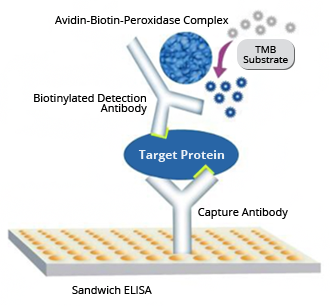Are you familiar with the multiple methods you could use to perform an ELISA? Among the standard assay formats illustrated below, where differences in both capture and detection are in concern, it is important to differentiate between the particular strategies that exist specifically for the detection step. However an antigen is captured to the plate (by direct adsorption to the surface or through a pre-coated “capture” antibody, as in a sandwich ELISA), it is the detection step (as either direct or indirect detection) that largely determines the sensitivity of an ELISA.

Key Steps in Different ELISA Types
| Indirect | Direct | Sandwich | Competitive | |
| Capture Ab Coating | X | X | √ | X |
| Antigen Coating | √ | √ | X | √ |
| Blocking | √ | √ | √ | √ |
| Sample (Antigen) Incubation | X | X | √ | √ |
| Primary Ab Incubation | √ | √ | √ | √ |
| Secondary Ab Incubation | √ | X | √ | √ |
| Substrate Prep | √ | √ | √ | √ |
| Signal Detection | √ | √ | √ | √ |
| Data Analysis | √ | √ | √ | √ |
Compared to the other ELISA formats, the sandwich ELISA has the following advantages:
- High specificity: the antigen/analyte is specifically captured and detected
- Suitable for complex (or crude/impure) samples: the antigen does not require purification prior to measurement
- Flexibility and high sensitivity: both direct or indirect detection methods can be used

The diagram above shows the schematics for Cepham Life Sciences Sandwich ELISA method.
Check our online catalog of complete, ready-to-use sandwich ELISA Kits and choose the kit for your purposes:





